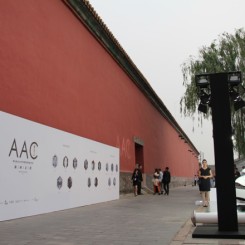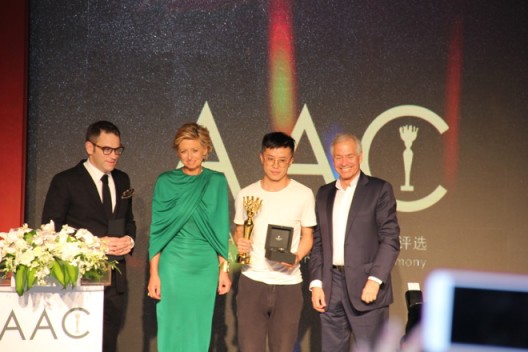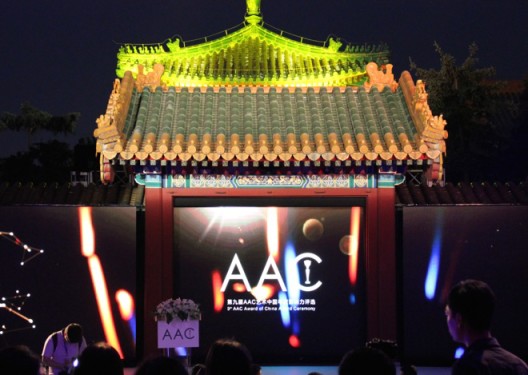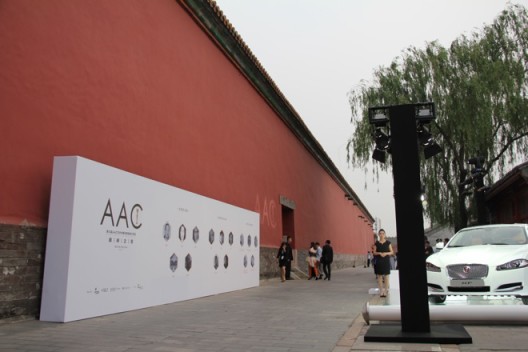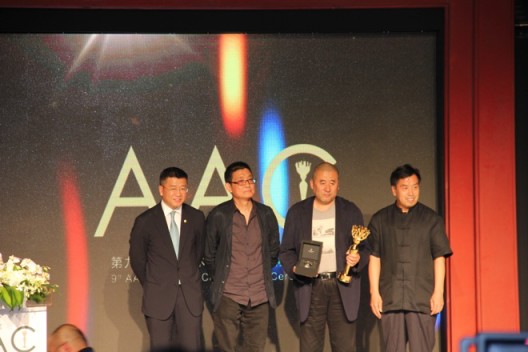The Award for Art in China (AAC), founded by Artron.net in 2006, is the most lavish award in the world of contemporary art in China. Taking place every year at the Great Hall of the Establishment of Virtue (Jianfu Gong) in the Forbidden City—that symbol of cultural orthodoxy—AAC stands for “Award for Art China—the Most Influential People of the Year”. Recently, on May 28, the 9th AAC award ceremony was held. Zhang Peili won the “Artist of the Year”; five publications collectively won the “nomination prizes” for “Publication of the Year”; and Lin Ke won “Young Artist of the Year”. Much can be read from the selection for these prizes every year year. From this year’s honours, three points can be surmised:
First of all, the thirteen awards from the previous year have been reduced to three categories. In particular, the different awards for “Artist of the Year” based on medium (oil painting, calligraphy, sculpture, etc.) have been cut down and combined. This could very well be because such categorizations are not appropriate—or perhaps the spotlight needs to stand out all the more. It is a smart move on Artron’s part. For one, the very many artists awarded in previous editions did not in fact grant the awards a greater influence (and being cross-disciplinary sometimes only heightens a sense of detachment, rather than influence; this is the case with some calligraphers). Secondly, the artists themselves will not become more famous due to this award (for Su Xinping, say, winning the “AAC Artist of the Year: Painting” is far, far less important than being the Vice-President of the Central Academy of Fine Arts).
Moreover, the “keywords” this year (“evolution” and “change”, or “focus on contemporary art”) certainly have nothing to do with the desire for change on the part of the organizers or those on the selection committee, and certainly are not the result of their sudden ardor for “contemporary art”. Rather, after the rise of ink art, with the uptick of activity in contemporary art, Artron is barking up another tree.
Thirdly, the “Publications of the Year” this year had five publications winning the nomination prize; these are: A History of Exhibitions: Shanghai 1979–2006 (by Biljana Ciric); Contemporary Chinese Art: A Critical History (by Paul Gladston); Contemporary Chinese Art; Jijin Yishu Xiaoshi: Bashi-niandai Shanghai Jishi [trans. “A Short History of Radical Art: A Record of the 1980s Scene in Shanghai” by Zhao Chuan]; and Zhongguo Dangdai Yishu Yanjiu / Journal of Contemporary Chinese Art Studies, volume 1: Ganguan Meiti yu Renzhi Fangshi de Zhuanbian (“A Transition in Sensory Media and Styles of Cognition”). One gets a strong sense of a certain nostalgic spirit from these works—all to varying degrees a reorganization and re-examination of “contemporary art” since its appearance in the early 1980s up to the present. Equally, it was not because the selection committee has a deep interest in what happened in the past, but stems from a practical demand for “searching for roots” in order to present on the contrary an idealistic image of “contemporary art” in China.
From this perspective, instead of seeing AAC as what the organizers strive to attain—the “Oscars of the Chinese Art World”—it might be better to see it more like a “national exhibition of art” [see note below]: official, lavish, ceremonious. Is AAC important, then? Certainly—just like the “National Art Exhibitions” back in the day, it records very well the ways of doing contemporary “back in those years”; it is also much like a weathervane, indicating and predicting the directions of many artists’ practices. More importantly, this award very clearly illustrates a reality: contemporary Chinese art is actually still in an awkward, embarrassing state, needing to find a balance between the “official system” and the international art system, between idealism and reality. As for the reasons and justifications given for the awards, the hackneyed terms used repeatedly by critics—“individual”, “reflection” and so forth, perhaps Baudrillard’s statement still stands: “[T]here is no longer any possible critical judgment, and only an amiable, necessarily genial sharing of nullity. Therein lies the conspiracy of art and its primal scene, transmitted by all of the openings, hangings, exhibitions, restorations, collections, donations and speculations…”
The “National Exhibition of Art” is co-hosted by official state institutions like the Cultural Ministry and China Artists Associations. From 1949 onwards, these exhibitions of “official art” have been held once every so many years. The exhibitions basically express official ideology within the realm of art, strongly emphasizing adherence to set themes and ideological orthodoxy.



